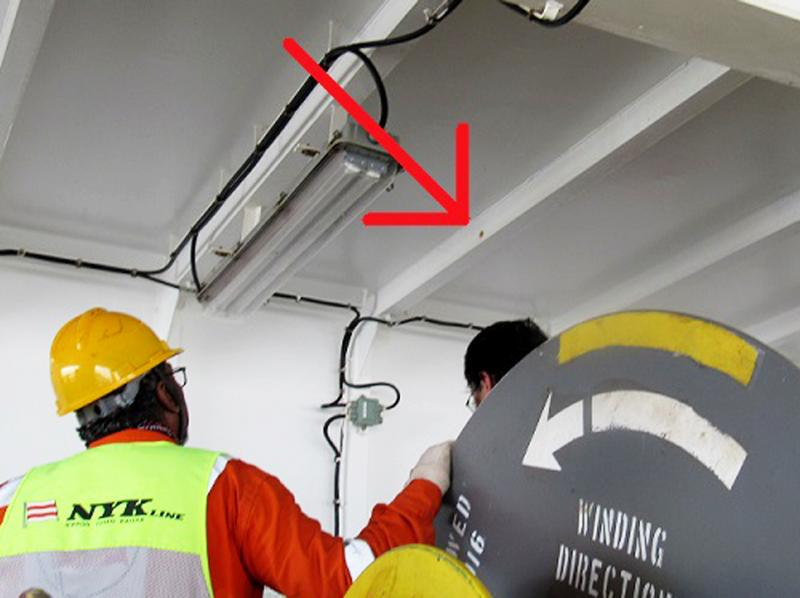Baltimore, Maryland - A U.S. Department of Agriculture (USDA) laboratory confirmed last Tuesday that four egg masses U.S. Customs and Border Protection (CBP) agriculture specialists discovered on a vehicle transport ship July 25 in Baltimore were the highly destructive Asian Gypsy Moth.

Gypsy Moth egg masses on a vehicle carrier
in Baltimore July 25, 2018.
During a routine inspection of the M/V Gaia Leader, CBP agriculture specialists encountered two egg masses and a dead adult moth near the gangway and two additional egg masses near the aft mooring station on the vehicle carrier. The vessel had made a port call in June to Japan, a high-risk AGM area.
CBP agriculture specialists removed the egg masses and treated the area. Agriculture specialists submitted the specimens to the USDA pest identifier who confirmed the egg masses as Asian Gypsy Moth (AGM).
According to the USDA, AGM poses a significant threat to our nation’s forests and urban landscapes as it is known to be extremely mobile – females can travel up to 25 miles per day – can lay egg masses that could yield hundreds of hungry caterpillars, and is itself a voracious eater that attacks more than 500 species of trees and plants.
AGM differs from European Gypsy Moth (EGM). EGM is well established in the Northeast United States. EGM females are flightless and prefer oak, while AGM females are active fliers and possess a more voracious appetite for a broader variety of plants and trees. USDA says EGM defoliate an average of about 4 million acres each year, causing millions of dollars in damage. If AGM were to establish in the United States, the damage could be more extensive and costly.
“Customs and Border Protection agriculture specialists quickly mitigated a serious threat that the highly invasive and destructive Asian Gypsy Moth poses to our nation’s agriculture and to our economy,” said Casey Durst, CBP’s Director of the Baltimore Field Office. “CBP agriculture specialists continue their vigilance against insect invaders through robust and stringent inspections of arriving high-risk merchant vessels and their cargo, particularly those vessels that call on ports in Asia, which is known as an AGM high-risk area.”

Asian Gypsy Moth egg masses on a
vehicle carrier in Baltimore on
July 25, 2018.
According to the USDA Animal and Plant Health Inspection Service (APHIS), officials first detected AGM in North America in 1991 near Vancouver, Canada. After that, AGM was detected in Washington, Oregon, and British Columbia. Since then, there have been several reported AGM infestations in North Carolina and the Pacific Northwest. Federal and state agriculture specialists eradicated all of those infestations by trapping and spraying.
CBP agriculture specialists perform a critical border security role in safeguarding America’s agricultural and natural resources from harmful pests and plant diseases. They have extensive training and experience in the biological sciences and agricultural inspection, inspect tens of thousands of international air passengers, and air and sea cargoes nationally being imported to the United States.
On a typical day last year, CBP agriculture specialists seized 4,638 prohibited plant, meat, animal byproduct, and soil, and intercepted 352 insect pests at U.S. ports of entry.
